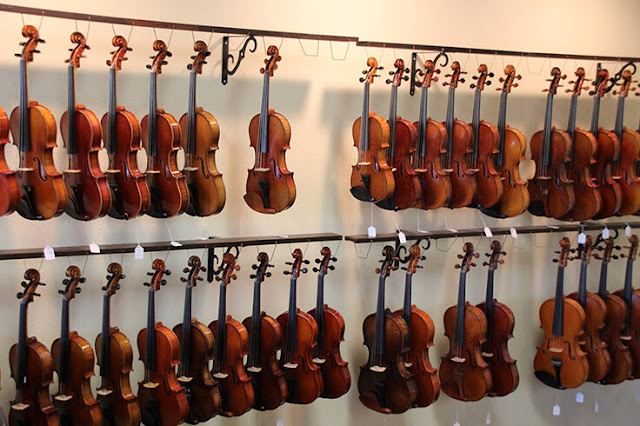Have you ever wondered how they make the Violin strings, Violin bow and Cello bow?
People enthusiastic about the instruments they are playing are constantly wondering how the makers made such an exquisite piece. The Violin and the Cello are the oldest members of the stringed instrument family. The Violin and Cello have some external belongings combined, creating the most exhilarating experience for a player. The materials of these pieces were decided and made about 300 years back. Throughout the years, it has updated and changed as per the musical requirements. Today, we will be discussing some of it and will try to give you an idea for this. Here we have some information about the Violin strings, Violin bow, and Cello bow. We'll take you one by one.
Violin strings are made from animal intestines, basically
About 300 years back, all the stringed instrument's strings were made in the same way, like- harp, Cello, Violin, viola etc. They were all made of animal intestines. Although the famous catgut strings were never made from the cat intestine, they were made of sheep intestines. The intestines or the gut strings were stretched, twisted, and expertly dried. This is why the strings used to make such resonant, rich and vibrating sounds when stretched from one end to the other. Throughout the decades, the makers have upgraded themselves. In today's age, also to make the Violin strings impeccable, the gut cores are used. But the experts suggest that this may not be the ideal one to go as they are fragile, temperamental and break down faster than expected. The post-core production of the Violin strings is mostly the same regardless of the material you choose. An excellent vibrating sense is the biggest asset for the strings of the Violin as it is the most critical part.
All wooden Violin bows are made in the same way
The Violin contains different parts, as we discussed earlier, such as strings, bow, frog, stick etc. Here we will try to simplify the making of the Violin bow for you. The wooden bows are certainly the right one to go for as you can get the authentic certification, and it lasts for a long time, so you don't need to invest every time. We will discuss the stick, the hair, the frog, and the screw. Some famous woods are used in the process to make the stick are especially- carbon fibre, Pernambuco, brazilwood etc. Among these, the carbon fibre ones are becoming famous. The process starts with the selection and cutting of the stick. Then comes the deciding part, where they start the carving process. The hair of the Violin bow touches the strings and produces the sound. The hair contains the layer of rosin; it then usually goes for warming up in the open flame. The frog and the screw hold the whole piece of Violin together. Every tight screw decides if the hair should loosen or tighten. On the other hand, the frog keeps the hair apart.
A Cello without a bow is like an arrow without an arrow
To know about the Cello bow, one must know about the stick, frog, hair and screw. Like the Violin bow, the Cello bow has some similar characteristics. The bow's stick can be made of Pernambuco, brazilwood, carbon fibre, fibreglass, and other popular wood types. The frog is where the hair and stick are connected. It is usually made from ebony and ivory if you want to decorate it. The Cello bow has a hair part consisting of 170-200 hair. It is commonly made from horse hair or synthetic-nylon core. The frog can also decide when to lose or tighten the hair. The screw especially gets used when the Cello bow hair needs replacement. Although if you leave it tight for a long time, it can cause the sound effect of the Cello and cause significant changes, so one might lose when they are not practising.
Final thoughts:
The instruments we have been learning or playing for a long time have undergone significant changes and upgrades to produce such tunes. An ideal musician should know about the procedures of their instruments. It is a sign that you are genuinely passionate about your work. It shows integrity and courage. We have tried to give you an idea of how the Violin strings, Violin bow and Cello bow are made. I hope we were of help.




Comments
Post a Comment